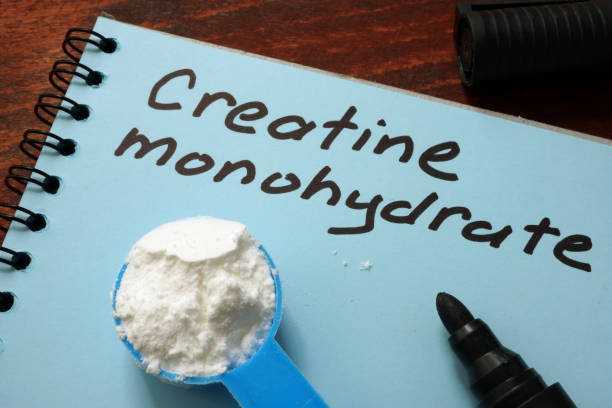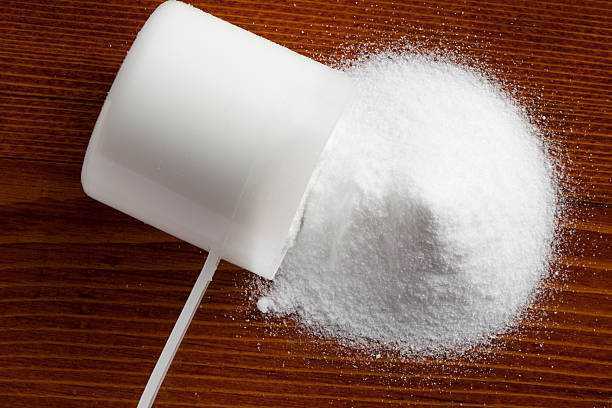There are so many different varieties of creatine on the market.
It can be hard to know which one is right for you.
In this blog post, We’ll go through all of the many sorts of creatine, as well as their advantages and drawbacks.
We will also provide information about how each type of creatine works and what to look for when choosing a product.
So whether you’re new to creatine or just looking for a better understanding of the different types available, read on!
Let us get a quick overview on our creatine types, we are going to talk about:
- creatine monohydrate
- creatine ethyl ester
- creatine hydrochloride
- buffered creatine
- liquid creatine
- creatine magnesium chelate
- creatine citrate
- creatine malate
- creatine nitrate
- creatine gluconate
- creatine pyruvate
- creatine alpha-ketoglutarate
- multi-component creatine
- creatine anhydrous
What Are The 14 Types of Creatine?
So, are you ready? Let us get directly started!
Creatine Monohydrate

Creatine monohydrate is the most popular and researched creatine form. It’s also the cheapest and most effective, making it the best choice for most people. The amino acids in creatine monohydrate increases muscle strength, power and size. It also helps to reduce fatigue, making it easier to train harder and longer.
Creatine monohydrate is a safe supplement with few side effects. The most common side effect is weight gain, which can be avoided by drinking plenty of water and eating a healthy diet.
If you’re looking to improve your physical performance, build muscle or just get the most bang for your buck, creatine monohydrate is the supplement for you. It regularly comes in a powdered form but it also comes in other forms of creatine like micronized creatine and so on.
Creatine Ethyl Ester

Synthetic creatine supplements are available as several variants, including creatine ethyl ester. This form of creatine is more soluble in fat than water. This reduces the difficulty of absorption and usage by the body. It has been shown to increase muscle size, strength, and power. It may also help improve recovery from exercise.
Some research suggests that this creatine may be more effective than regular creatine monohydrate, but more research is needed. Because creatine ethyl ester is not as well researched as creatine monohydrate, there is less information available on its safety and potential adverse effects.
Creatine Hydrochloride
Creatine Hydrochloride is a binding creatine which is linked to hydrochloric acid. Creatine hcl is a more soluble creatine form, meaning that the creatine phosphate of creatine hcl can be absorbed by the body more easily. This makes it ideal for those who have trouble taking this supplementation, as it is easier on the stomach. HCL is also said to be more potent, so you may need to take less of it to see the same results.
Creatine HCL products are also said to be more convenient as it does not need to be loaded or cycled, and it can be taken with any beverage.
HCL is more effective than monohydrate at increasing creatine levels in the body, according to some studies.
Buffered creatine is a buffered form that has been buffered with an alkaline substance. Increasing the pH of creatine by 0.1 to 0.3 units allows it to be more soluble and absorbable.
Buffered creatine is often used by people who are looking to increase their muscle mass or improve their athletic performance.
Some studies have shown that buffered creatine can help to increase muscle mass, strength, and power. Additionally, this creatine type may also help to improve recovery from exercise and reduce muscle soreness.
Liquid Creatine

Liquid creatine is one of the creatine types that has been gaining popularity in recent years. This creatine form is more readily absorbed by the body, making it more efficient than other forms.. This creatine type also doesn’t cause stomach cramps that some creatine forms can cause.
Some people feel that liquid creatine is the best type to take because it is more readily absorbed by the body. However, there is no definitive evidence that it is more effective than other types.
Creatine Magnesium Chelate
Creatine magnesium chelate is a creatine type that is bound to magnesium. It also aids in the body’s absorption of nutrients.. It is also less likely to cause stomach upset.
Some research suggests that magnesium creatine chelate may be more effective than other creatine types. One study found that it increased muscle creatine levels by 20% more than creatine monohydrate. It also improved power output and reduced muscle soreness.
Creatine Citrate
Creatine citrate is a popular creatine form that is often used by athletes and bodybuilders.
It is created by combining creatine monohydrate with citric acid.
Citrate is said to be absorbed more quickly by the body than creatine monohydrate and to have a greater impact on muscle energy production.
Some of the benefits include increased muscle strength, and increased muscle mass. Additionally, creatine citrate has been shown to improve mental focus and cognitive function. This form of creatine, when used appropriately in conjunction with a carbohydrate-rich diet and intense exercise, may provide you with the edge you need to perform at your best.
Creatine Malate

Creatine malate is a creatine form that is frequently used by athletes and bodybuilders. It is made by combining creatine with malic acid, which is a compound that is found in many fruits. Malic acid helps to increase the absorption of creatine, which means that more of it can be used by the body.
There are a number of benefits to using this creatine type including:
- Increased energy levels
- Improved athletic performance
- Increased muscle bulk
- Reduced fatigue
- Improved brain function
Creatine Nitrate
Creatine nitrate is a creatine type that is bound to nitrate ions. This makes it more water-soluble than other creatine types, and it is thought to be more easily absorbed by the body.
Creatine nitrate is claimed to have a number of benefits, including increased muscle size and strength, improved exercise performance, and reduced recovery time. However, there is currently no scientific evidence to support these claims.
Creatine nitrate is a relatively new supplement, and more research is needed to determine its safety and effectiveness. If you’re thinking about using creatine nitrate, consult your doctor first.
Creatine Gluconate
This creatine type is creatine bound to gluconic acid. This combination provides a more stable and soluble form of creatine, which is why it is sometimes seen as an alternative to other creatine forms.
Some potential benefits associated with taking creatine types like this include:
- Improved exercise and muscle performance
- Increased muscular development
- Increased power
- Faster recovery from exercise
Overall, this creatine is a safe and effective way to improve your exercise performance. Gluconate is a form of creatine that has been found to be beneficial in some people. If you’re searching for a creatine alternative, gluconate may be worth considering.
Creatine Pyruvate
Creatine pyruvate is a creatine molecule that has been linked to pyruvic acid. Pyruvic acid is produced during glycolysis, which is the process that breaks down glucose to make energy. It has been studied as a supplement to improve exercise performance. One study found that it was able to improve time to exhaustion and VO₂max, which is a measure of the amount of oxygen that the body can use during exercise.
Another form of creatine might help to limit lactic acid accumulation during activity. Lactic acid is a by-product of glycolysis and can cause fatigue. By reducing the amount of lactic acid, creatine pyruvate may help you to exercise for longer periods of time.
More study is needed to assess the safety and efficacy of this supplement, which is a new treatment. If you’re thinking about taking creatine, talk to your doctor first.
Creatine Alpha – Ketoglutarate

Creatine alpha-ketoglutarate is a popular creatine form among bodybuilders and athletes. It is a salt of creatine and alpha-ketoglutaric acid. The benefits of creatine alpha-ketoglutarate include:
- Greater absorption of creatine into the muscles
- Increased endurance
- Recovery from exercise is quicker
- Improved cognitive function
- Good muscle creatine content
Multi-component Creatine
Multi-component creatine is a creatine type that includes multiple types of the supplement. This can include creatine monohydrate, creatine ethyl ester, creatine hydrochloride, and more.
The benefits of multi-component creatine include having a more well-rounded supplement, getting the benefits of multiple creatine types, and having a higher absorption rate. Multi-component creatine is a great option for those who are looking to get the most out of their creatine supplementation.
Creatine Anhydrous
Creatine anhydrous is a creatine supplementation type that contains no water molecule. This makes it more concentrated than other creatine supplements. The benefits include improved absorption, increased bioavailability, and faster results. Additionally, it is less likely to cause stomach upset than other creatine supplements.
Final Words
Boom! There you have it! All the different creatine types, listed in our guide!
So, what’s keeping you from starting? If you’re a man, do your sports nutrition a favor and go buy the best creatine for men. And if you’re a woman, go buy the best creatine for women!
Keep us updated in the comments below, which type you prefer!


